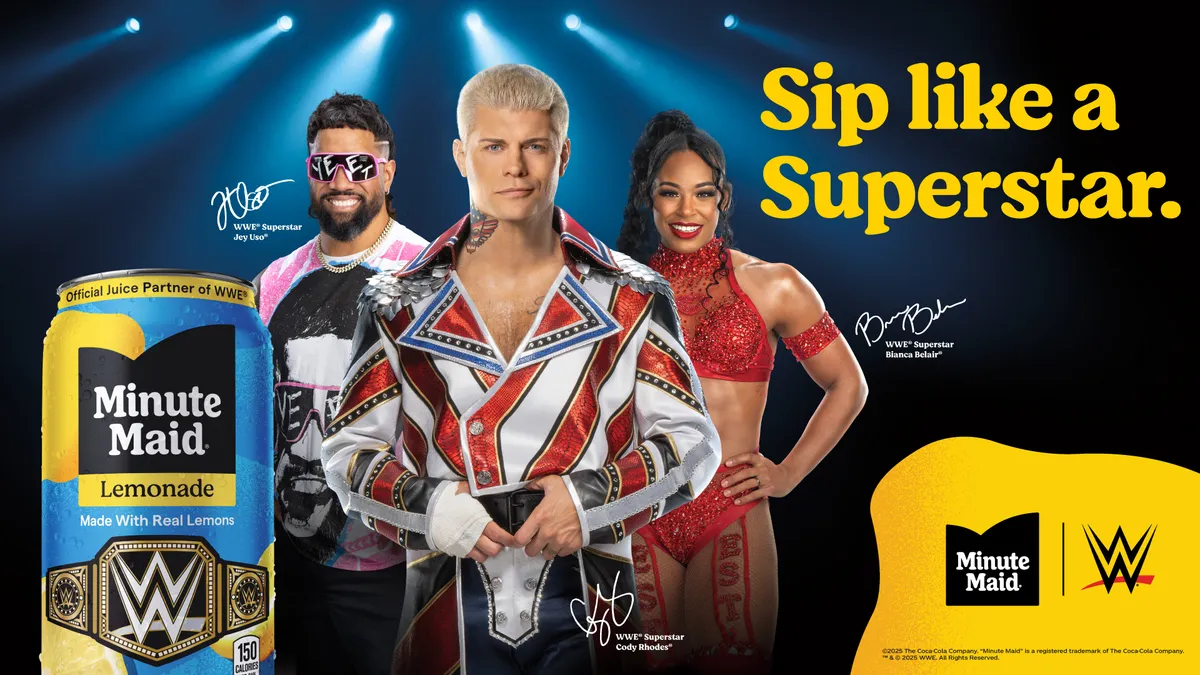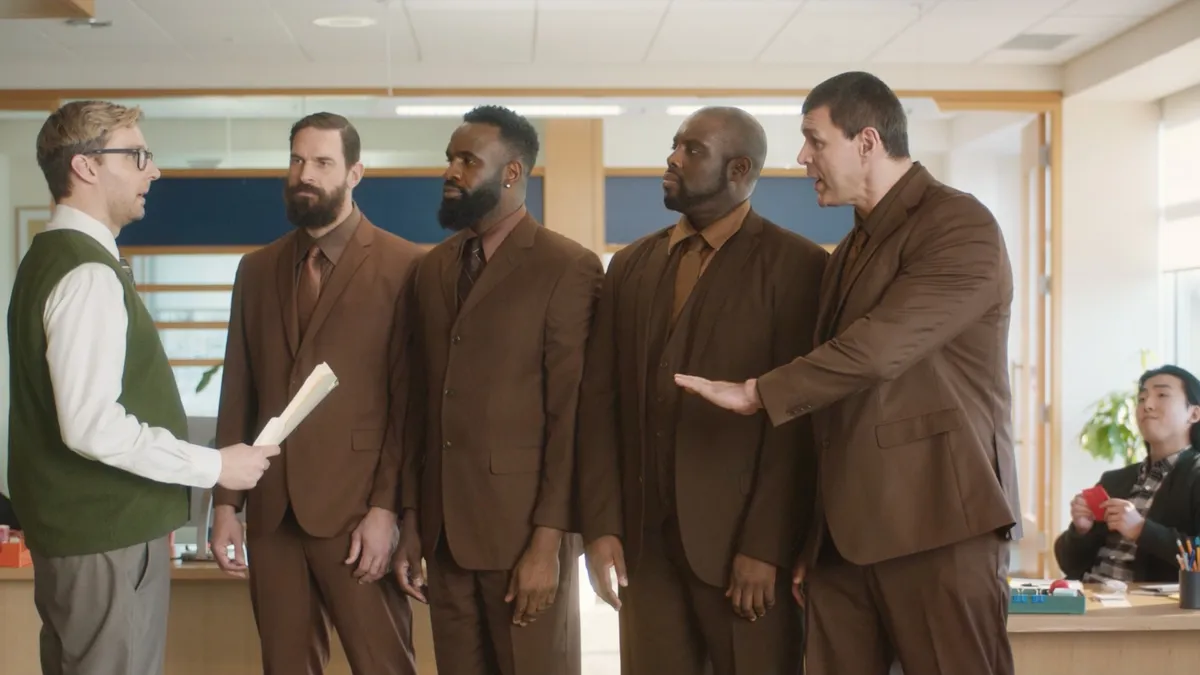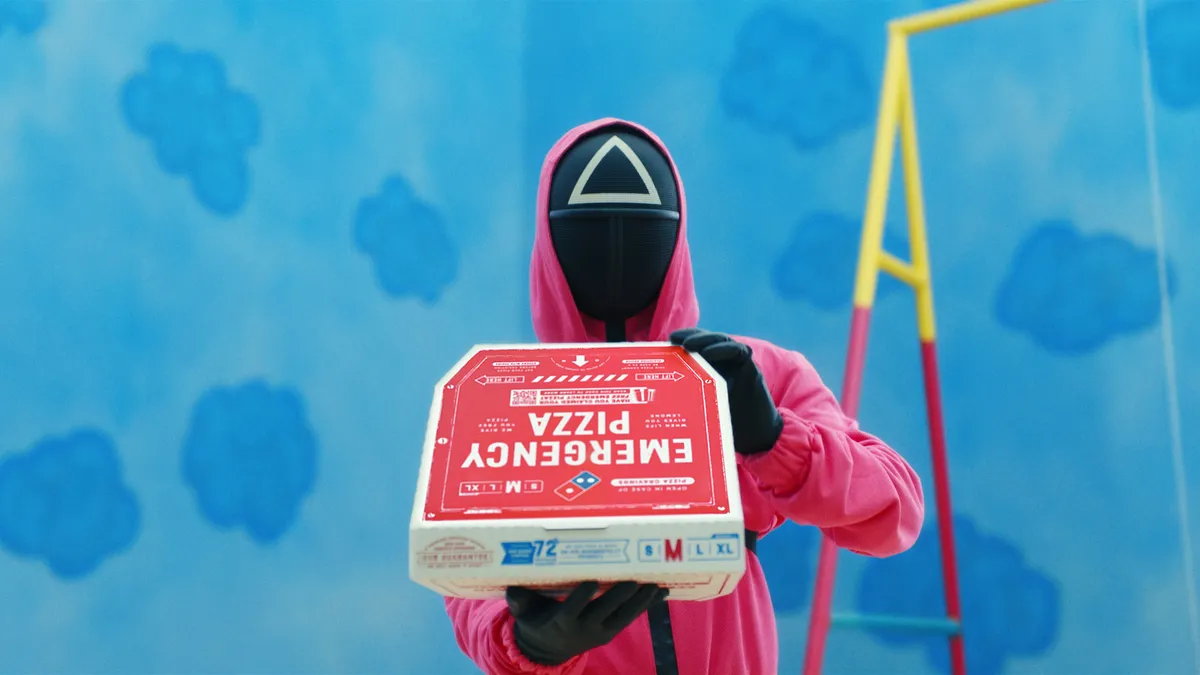It's hard to find someone who will argue that the chief marketing officer isn't essential to an organization, but lately, it feels like the role has been besieged.
Forrester in a 2019 report said that, while "not foretelling an end to the CMO role, we do see a stage set for a desperate fight for survival."
The year started off tumultuously for CMOs, with multiple hirings and firings at top brands just two months into the year. And that was before the coronavirus outbreak, which has made the chief marketing role even more difficult as brands try to strike the right tone when they engage with consumers.
The pandemic will pose short-term challenges for CMOs, and could even impact what skills companies look for in the role, but it could also be an opportunity, according to Ewan McIntyre, vice president, analyst at Gartner for Marketers.
"I think really, this should be an opportunity for marketing to be able to show that it can be fiscally responsible as well," he said in an interview, noting the tension between the CFO and CMO roles, especially with marketing budgets on the line as many companies cut costs. "I definitely think there's risk but I think there's an opportunity for CMOs to step up and show that marketing is a huge value-add to the organization ... and of course, the risks of not spending [on] marketing."
The role of the CMO was challenging long before this moment, though. The pandemic adds another layer of difficulty to the complex job, but many issues have existed for years.
As the scope of the role gets broader and makes being a CMO trickier, some companies are shifting how they see the position entirely. A few changes in the role include companies dropping the CMO position altogether, hiring chief customer officers for CMOs to report to, or introducing new roles to either replace or work in conjunction with the CMO.
Despite the chaos engulfing CMOs, the issues may lie more with the title than with the actual role.
"The word 'marketing' is what's flawed in the title," Forrester Research Director Keith Johnston said in an interview. "It's not what the Chief Marketing Officer does — those things are not going away. The brand building, the customer facing interfaces — all that stuff needs to be done. It's just, it's bigger than that now. It's the total brand experience. Everything that surrounds the customer is what the chief marketing officer has to do. Fundamentally, the marketing is just one piece of it."
An infeasible scope
If it seems as though the CMO role is threatened, that may be true.
Pre-pandemic the role was a hot commodity for recruiters. Early in 2020, Catherine Lepard, a managing partner in the global retail practice at Heidrick & Struggles, said the role was one of the "hottest" the firm had recruited for over the preceding 18 months, with demand far outstripping supply.
"Every organization is really trying to find that holy grail of a CMO who can honestly do everything," she said. "From being that really data-driven, technologist type of person, to being that front-end, creative storytelling type of person — that real human element — and they don't always naturally reside in one."
The onset of the digital era broadened the duties of CMOs in a big way, as marketing was entwined with data and the full customer experience. Forrester's report highlights the case of KFC, where the CMO controls innovation, marketing, operations, media and sales, a breadth of control that "allows ideas to come to life quickly and be delivered to customers with strategic agility."
"Even though we expect less than 10% of those with an actual CMO title to elevate it to this degree, 2020 will clarify the CMO role — and one designated C-suite leader will be responsible for all that surrounds the customer," the report reads.
Of course, that report was published prior to the coronavirus outbreak, which has complicated marketing, and likely most long-term role planning, for the time being.
In addition to a growing list of responsibilities, the CMO role also requires a good collaborator, which may sound simple, but requires having someone knowledgeable enough to have a "credible conversation" with the leaders of IT and finance, among other departments, Chris Ross, vice president, analyst at Gartner for Marketers, said.
"If you look at what's the typical charter of an enterprise grade CMO: They are responsible increasingly for bigger chunks of customer experience, they have a really increasingly large marketing technology stack that they're responsible for, they're often tasked with owning some proportion of the innovation initiatives for a company," Ross said. "You've got a super complicated consumer landscape. You've got all kinds of business models — disruption happening in virtually every industry. It's a very hard, very substantial job."
And we may soon be adding "crisis management" to the list of skills CMOs are expected to have, thanks to the disruption the pandemic has caused throughout retail, said Karthik Easwar, associate teaching professor of marketing at Georgetown.
"When we hit round two of this, or the next pandemic, we need a team in place and a leader in place who's able to not just do things when business is usual, but when business is unusual," he said.
To Ross, most of the upheaval in the role comes back to the issue of a frequently infeasible scope. It explains the revolving door in the CMO role and it also explains the many different ways companies have reorganized the C-suite to try and account for the broadening of the position.
"If you look under the hood, no matter what the labels are, all the same work is really being done."

Chris Ross
Gartner, VP and marketing analyst
Some companies, like Tailored Brands, have CMOs or senior-level marketing execs that report to chief customer officers. Walmart, too, has a chief customer officer, responsible for the Walmart brand and "thinking through the customer journey for both Walmart stores and e-commerce," according to the retailer's site.
Other retailers are turning to different positions entirely, including Lululemon, which named a chief brand officer in January, and Designer Brands, which named a chief growth officer in February. Indeed, Johnston said Forrester has seen "an explosion" of chief growth officers recently. But though the titles may change, marketing still needs to happen, and someone has to be responsible for that.
"If you look under the hood, no matter what the labels are, all the same work is really being done," Ross said. He added that most of the changes he sees in marketing are coming more at the "lieutenant" level, or the direct reports to a CMO, which can vary widely from one company to the next, and can also hugely impact a CMO's success, especially if a CMO inherits a bad team and has to spend valuable time fixing it.
As far as direct reports go, heads of loyalty and customer experience within marketing are becoming more popular, Ross added, as well as marketing operations positions, which essentially puts someone in charge of the, "frankly not very sexy digital grunt work of the organization."
The expanding scope has, on one hand, besieged CMOs with a job that can border on the impossible, but on the other hand, it's increased the importance of the C-suite position that includes marketing, no matter what organizations choose to call it.
"Merchants and operators were the kings in the organization, they led the organization. But in today's retail world, it's all about customer-centricity," Lepard said, adding that marketing has taken on a more elevated role.
Indeed, in late March, RTW Retailwinds announced that its new CEO would be Traci Inglis, who at the time held the position of chief marketing and customer officer. Days before she was set to take over the top spot, however, and in the midst of the coronavirus outbreak, she resigned.
"If you really just want to cut to the chase, what organizations are trying to achieve is one central voice of the customer so that it feels like there's continuity across every aspect of how they manage their business," Lepard said. "The chief marketing officer becomes the North Star for the brand."
'Live by the sword, die by the sword'
The flip side of the CMO role's growing importance in retail organizations is its growing vulnerability. As the CMO becomes more central to a retailer's decision making, the position also becomes a more likely scapegoat for business failures.
"The scope is so broad, that oftentimes, it's just very difficult with fragmented attention to get anything done," Ross said. That problem is exacerbated for CMOs at a brand that's struggling financially or in the midst of a challenging turnaround, which for the moment feels universal as retailers struggle to stay afloat with their stores temporarily closed.
"Every CMO has a lot of stuff in flight," he said. "But when it's all equally important, it's like, 'We're doing a complete digital transformation of all of our infrastructure, and we're overhauling our brand, and we're launching new markets.' You have conversations with people like that, and in some cases, they pull it off — sometimes they really are able to pull a rabbit out of the hat — and in other cases they end up on fire in the ditch."
Effectively, the broadening of the CMO's scope means that they become tied to the success (or lack thereof) of the entire business, and can be quickly replaced if the business isn't performing as expected. Added to the struggle is the fact that CEOs are often ousted at underperforming retailers, leaving the rest of the C-suite at risk when a new leader is named.
"Usually when a new CEO is coming into retail it's because the retailer hasn't been making change fast enough and the obvious person who is supposed to be responsible for that change, and the consumer, is the CMO."

Catherine Lepard
Heidrick & Struggles, managing partner in Global Retail Practice
Mark Tritton's overhaul of Bed Bath & Beyond's leadership team (which included the chief marketing officer) is one example of the sweeping changes a new top executive can make.
"Usually when a new CEO is coming into retail it's because the retailer hasn't been making change fast enough and the obvious person who is supposed to be responsible for that change, and the consumer, is the CMO," Lepard said.
She added that CMOs are also increasingly responsible for driving traffic to retailers. "They're being held to a higher standard than in the past, and I would say yes, that does make them more vulnerable if they're not showing hard results."
The vulnerability of the CMO role is nothing new. In the summer of 2017 — nearly three years ago — the Harvard Business Review published a piece on "The Trouble with CMOs," finding that 57% of CMOs had been in the role three years or less, and more than 40% had been there two years or less.
Just recently, J.C. Penney lost its head of marketing in Chief Customer Officer Shawn Gensch, who resigned in February just after the department store had finished hiring for his marketing team. He had been at the retailer since May.
In HBR's report, the publication also found that duties for the CMO role varied widely. Aside from marketing strategy and implementation, and brand strategy and customer metrics, HBR found that the range of responsibilities was a "mind-boggling" number, including pricing, sales management, public relations, e-commerce, product development and distribution.
Those responsibilities also ostensibly change depending on what type of retailer a CMO works at, and what the company's goals are.
"If I'm Casper, I'm selling a mattress," Johnston said. "That's a very specific job, to market a mattress. Whereas retail, it's much broader. You're selling the brand, you're selling the space, lots of products are in there … It's just a very different job."
Direct-to-consumer brands were also born online and therefore the job is much more tied up in one channel than at, say, a department store. That and the narrow product assortment might make the CMO role more manageable in some ways. But direct-to-consumer brands also have the burden of building a brand, while traditional brands — for better or for worse — don't.
In some cases, having a legacy brand can mean the CMO role becomes one of maintenance, but in other cases, it means the CMO is responsible for refreshing a "stale" brand or, worse, trying to change the perceptions around a brand that is "known for something that we don't really want to be known for," Ross said.
Victoria's Secret has faced a version of that problem for years, as consumers turned away from sexualized marketing. Gap, Inc., along with others in the space, has struggled with trying to improve the performance of its legacy Gap brand. CMO Alegra O'Hare left the company shortly after CEO Art Peck did, with a promise that the company would be "redefining" her role.
"Those are live by the sword, die by the sword kinds of moments for a new CMO," Ross said. "It gives you an opportunity to be a hero if you come in and turn one around, but you could just as easily be the next person escorted out the door."
When 'chiefdoms' run the business
Even with a competent CMO, organizational dysfunction can lead to failure. The priorities of the CEO may be different than the CMO, or the CMO's responsibilities could be properly aligned, but their ability to make decisions could be limited.
"There's all these silos of different constituencies within a retail organization," Ken Morris, managing partner at Cambridge Retail Advisors, said in an interview. "There's the finance people, there's the stores people, there's the IT people, there's the merchants — and they're all these chiefdoms and they really need to work together in a holistic way."
The relationship between CIOs and CMOs, especially, has a history of being contentious, as data has become essential to the CMO's role. That relationship has improved over time, however, at least between "smart" marketing and IT leaders that recognize they need each other's help to succeed, Ross said.
"They kind of want the fix, but they're not willing to take the medicine."

Chris Ross
Gartner, VP and marketing analyst
Success in the top marketing role also stems fundamentally from how much authority and budget the CMO is given, Johnston said, and that in itself can be dependent on how many C-suite roles an organization has. If there's a chief customer officer, chief digital officer and a chief marketing officer, "all of a sudden what they do on a day-to-day basis starts to look very similar."
Or a CMO is hired to give a brand an entirely new image, but organization leaders aren't willing to make tough decisions or shell out the necessary budget to get that done.
"They kind of want the fix, but they're not willing to take the medicine," Ross said.
That could get even harder as companies slash marketing budgets for the foreseeable future, limiting opportunities for growth and focusing more on maintenance.
Outside of the massive scope and the inherent vulnerability of CMO title, much of the departures, new roles and split roles seen in recent years come from businesses that are still trying to figure out how to structure themselves in an era when marketing is as much about the customer's entire journey as it is about customer acquisition.
For some, it's just trying to figure out a way to deal with the evolution of the CMO position, but for other businesses, it may be that the entire organization itself is transforming from one focus to another, Lepard said, which could mean a different type of CMO is necessary.
"You would not see so much disruption in the C-suite," Johnston said, "if the CEO and others in the C-suite knew what they were doing."
























